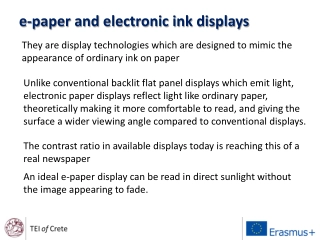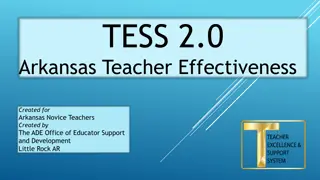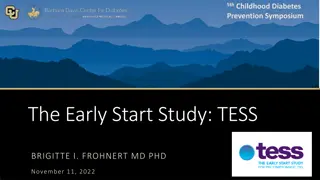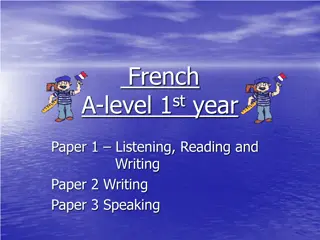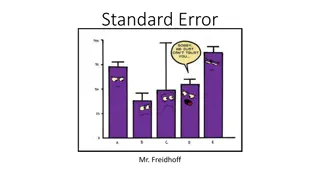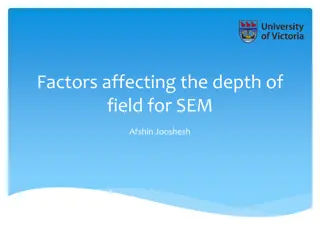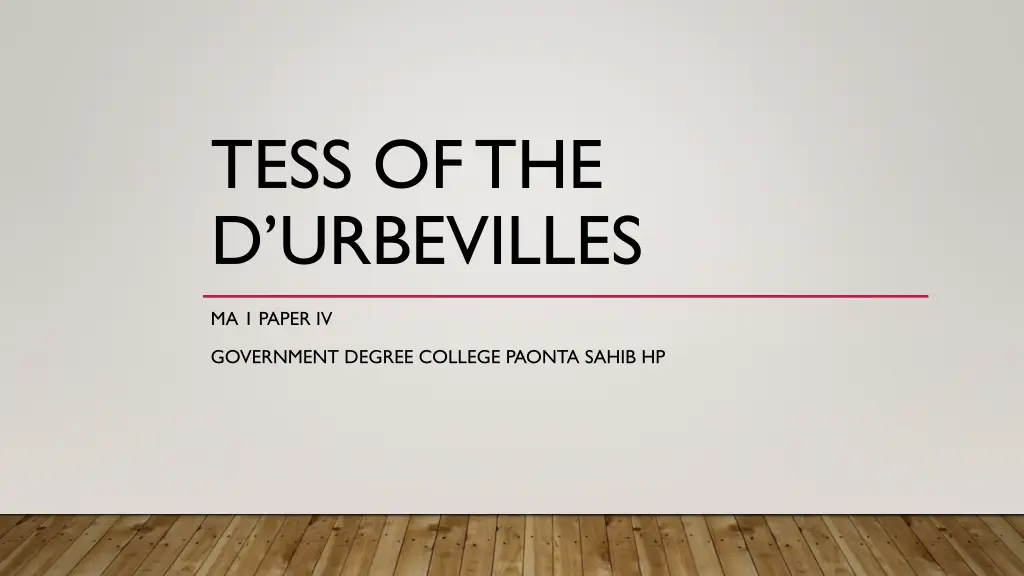
Narrative Sympathy in Tess of the D'Urbervilles
Explore the themes of victimization, narrative sympathy, and the use of coincidence in Thomas Hardy's novel Tess of the D'Urbervilles. Delve into the complexities of Tess's character, her struggles against societal norms, and the forces that shape her tragic fate. Discover the symbolic role of nature and the presence of irony in this compelling narrative.
Download Presentation

Please find below an Image/Link to download the presentation.
The content on the website is provided AS IS for your information and personal use only. It may not be sold, licensed, or shared on other websites without obtaining consent from the author. If you encounter any issues during the download, it is possible that the publisher has removed the file from their server.
You are allowed to download the files provided on this website for personal or commercial use, subject to the condition that they are used lawfully. All files are the property of their respective owners.
The content on the website is provided AS IS for your information and personal use only. It may not be sold, licensed, or shared on other websites without obtaining consent from the author.
E N D
Presentation Transcript
TESS OF THE D URBEVILLES MA 1 PAPER IV GOVERNMENT DEGREE COLLEGE PAONTA SAHIB HP
Recap Lecture Conflict btwn her moral ideals the double standard in patriarchal Victorian sexual ideology Victim of her own passivity her internalization of the sexual moral codes in society (?) Tess Woman as Victim Victim of her high moral standards her pride Victim of her own physical charms Victim of her innate innocence purity a natural disposition 3 Complexity of Tesss victimization is the source of the tragedy within and/or outside of her? A tragedy solely due to gender? What about family social class?
The force of the novel stems from the narrative methods used by Hardy to convey an intense sympathy for Tess Nothing is more remarkable in the novel than the extraordinary passion with which Tess is described and justified. (Biographer, Michael Millgate 1971)
The force of the novel stems from the narrative methods used by Hardy to convey an intense sympathy for Tess Nothing is more remarkable in the novel than the extraordinary passion with which Tess is described and justified. (Biographer, Michael Millgate 1971)
Natural setting is used symbolically and bears an integral relationship to the physical psychological state of Tess Concept of Nature as the presence that remains unaffected by, indifferent to human suffering. Sometimes, Nature exercises an active influence on the course of events. like a fly on a billiard table of indefinite length (Chap 16, p.105) Tess as defenceless vulnerable
2. Use of Coincidence / Chance events As the external expression of Fate which is omnipotent indifferent Chance a subordinate agency of Fate something that happens unpredictably without discernible human intention or observable cause 12 Cumulative effects of chance / coincidence that thwart Tesss well-intentioned actions E.g. Tesss wish to confess to Angel Clare before marrying him is frustrated by chance which has her confessional letter slipped under the carpet, so that Angel never sees it. Inevitability of suffering Too far-fetched? Excessive?
3. Irony a) Cosmic irony Cosmic irony or the irony of fate exists when God, or destiny, or the universal process, is represented as though deliberately manipulating events to frustrate and mock the protagonist M.H. Abrams Ironic references to Christianity, God or gods
Omens Foreshadowing Images connected with omens of misfortune Death of Prince, the horse and Tess seeing herself as a murderess Tess pricked by a thorn from the roses that Alec dUrberville gives her on her first visit to his house Crowing of the cock on her wedding day signifies either a brides unchaste nature or just ill-luck Builds up a pessimistic atmosphere of fatality and impending misfortune
Imagery Symbolism Natural imagery earth, flowers, agriculture Animal imagery Colour (esp. red) Clothing, dressing up Symbolic use of setting sun, mist / fog, light vs. dark, seasons Naming
Point-of-view Voice Perspective Third-person omniscient narrator Events seen through the eyes of different characters (i.e. multiple perspectives) Intrusive voice of the author


